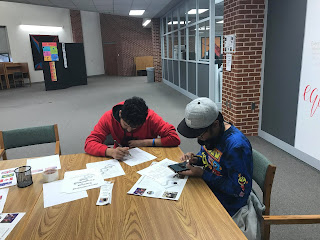All the revenues that international students bring to the US and there are certain decisions made by authority that makes international students as well as concerned authorities sad. A NAFSA survey indicated that the coronavirus may cost the United States $3 billion in fall 2020 because of declines in international student enrollment from COVID-19.
The decline, according to the American Council on Education (ACE), is expected to be a revenue loss of $23 billion for institutions.
Does the new policy for taking a physical class over online in the current scenario make sense? (Details of new policies are below)
International education is an often underutilized means by which the United States can refine our foreign policy, improve our national security, strengthen our economy, and promote mutual understanding and cooperation among nations. Unfortunately, less than 2 percent of American college graduates are able to study abroad, and of those that do, nontraditional students, students of color, and those with limited financial means are disproportionately denied opportunities that would prepare them to participate and compete in a global marketplace. Our government and higher education must work together to eliminate the international education divide that disadvantages huge swaths of citizens by shutting them out of vitally important learning.
"International students generally must attend all of their courses in person and are prevented from taking more than one online class a semester while studying in the U.S.
In March, however, ICE made an exception for international students attending schools that had switched to online classes only amid the pandemic.
There were 872,214 international students enrolled in the U.S. in 2018-19, the most recent year data was available, according to the Institute for International Education, a State Department-backed initiative that tracks international student enrollment in the U.Sand internationally.
International students contributed $45 billion to the U.S. economy in 2018, the institute said.
Under the policy memo announced Monday, international students enrolled at institutions that offer classes entirely online in the fall will be given the option of switching to a school that offers a hybrid of online and in-person classes or leaving the country and taking online classes from their home countries, said Carissa Cutrell, acting ICE deputy press secretary."
As the fall 2020 semester approaches, non-immigrant students who are part of the SEVP and have a full course load of online-only classes will have to return to their respective countries.
If returning to their home country is not possible, students will have to take alternative steps to maintain their nonimmigrant status, such as finding a school that will cater to in-person classes, a reduced course load, or appropriate medical leave, according to an ICE news release.
The SEVP stated in a news release that schools should update their information in the Student and Exchange Visitor Information System (SEVIS) within 10 days of the change if they begin the fall semester with in-person classes but are later required to switch to only online classes, or if a non-immigrant student changes their course selections, and as a result, ends up taking an entirely online course load.
As the COVID-19 pandemic rages on and cases continue to increase in the U.S., those who have worked to migrate to the states for either work or education have been left behind.



























